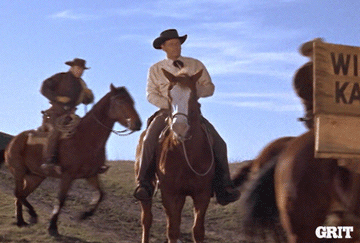
The Sons of Pioneers made the song Tumbling Tumbleweeds popular in the 1940’s.Ī severe drought in the 1930’s in Canada led farmers to use young tumbleweeds as hay and silage for livestock. The peregrinating (highly traveled) plant also grows abundantly in Afghanistan, Argentina, Australia, Canada, Chile, China, Egypt, Greece, Hawaii, Hungary, Indonesia, Iran, Italy, Japan, Lebanon, Mexico, Morocco, New Zealand, Norway, Pakistan, Poland, South Africa and Turkey. Within two decades the plant had tumbled into a dozen states, and by 1900, tumbleweed had reached the Pacific Coast. Tumbleweeds were first reported in the United States around 1877 in Bon Homme County, South Dakota, apparently transported in flax seed imported by Ukrainian farmers. Elevation range is from below sea level in Death Valley to over 8500 feet.

Plants thrive in salty and alkaline soils but will generally be outcompeted by natives in undisturbed habitats.

Herbicides now control the spread of Russian thistle by disrupting the maturation process of the plant.Īlthough tumbleweed is native to the arid steppes of the Ural Mountains in Russia, it is now ubiquitous throughout the western states, growing in disturbed soils such as agricultural fields, irrigation canals and roadside shoulders and ditches. When farmers removed prairie grasses, they created a perfect environment, smooth and flat, for a plant that could roll across the landscape dispersing seeds. Like many invasive weeds, Russian thistle exploited the destruction of native ecosystems. A specialized layer of cells in the stem facilitates the easy break between plant and root, and the journey begins anew. By autumn the plant has reached maximum size, flowered and begun to dry out. Plants thrive in salty and alkaline soils but will generally be outcompeted by natives in. It then quickly sends up two needle-like leaves and begins to shoot skyward. Range Although tumbleweed is native to the arid steppes of the Ural Mountains in Russia, it is now ubiquitous throughout the western states, growing in disturbed soils such as agricultural fields, irrigation canals and roadside shoulders and ditches. All that is required are temperatures between 28 and 110 degrees Fahrenheit. When moisture falls, the plant is ready to uncoil and germinate. To survive winter without a warm coat, the plant does not germinate until warm weather arrives. Instead, each seed is a coiled, embryonic plant wrapped in a thin membrane. Seeds are unusual in that they lack any protective coat or stored food reserves. Mice, bighorn sheep and pronghorn eat the tender shoots.Īs it rolls down a desert road, Russian thistle plants do what they do best, disperse seeds, which typically number 250,000 per plant. Inconspicuous green flowers grow at axils (where leaf branches off of stem) of the upper leaves, each one accompanied by a pair of spiny bracts. Most people, however, would fail to recognize the seedling and juvenile plant’s bright green, succulent, grass-like shoots, which are usually red or purple striped. Plants may be as small as a soccer ball or as large as a Volkswagen beetle. Virtually everyone recognizes a mature Russian thistle, which looks like the skeleton of a normal shrub. Examples include pigweed (Amaranth retroflexus, a widespread weed in the western United States) and other amaranths, tumbling mustard, Russian thistle, the steppe plant Colutea arborea, and the grass Spinifex of Indonesian shores and Australian steppes. tragus is the leading candidate for the inland variety of tumbleweed and S. tumbleweed, plant that breaks away from its roots and is driven about by the wind as a light rolling mass, scattering seeds as it goes. There does not yet appear to be a consensus on the preferred scientific name, although S. Salsola is derived from the Latin sallere, "to salt," in reference to the plant’s salt tolerance. Scientific names for tumbleweed include Salsola kali, S. Russian thistle alludes to its Eurasian origin. I recommend it."Tumbleweed," "Russian thistle" and "wind witch" are common names for this symbol of the American west. That print is out of sync for much of the presentation, and another print is too dark to watch.


Western tumbleweed gif movie#
"Tumbleweed" is a movie I never had heard of before seeing it at YouTube on 13 April 2016. Still, even if you know pretty quickly, you will be on edge wondering how he finally gets caught and, more important, how the hero manages to clear his name - IF either ever happens. This story is involved, although I figured out the bad guy early on. Which is a shame, especially considering how many movies have the performing horse's name above the title, even when he doesn't show as much talent as this one. Oh, and the title character himself? No credit is given for the superlative horse actor. But with the terribly under-rated Audie Murphy, the veteran and versatile character actor Chill Wills, the lovely Lori Nelson, and the later-in-his-life-wildly-popular Lee Van Cleef, among many others, "Tumbleweed" earns high praise. With lesser performers and a less-capable director, probably this would have been a lesser movie.


 0 kommentar(er)
0 kommentar(er)
